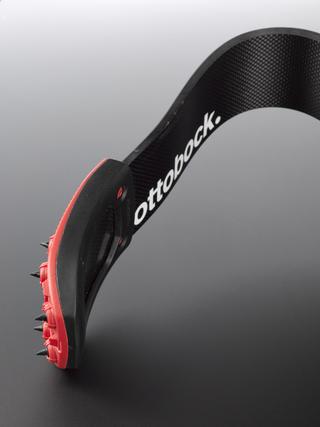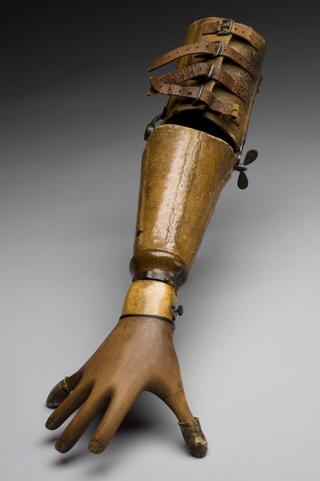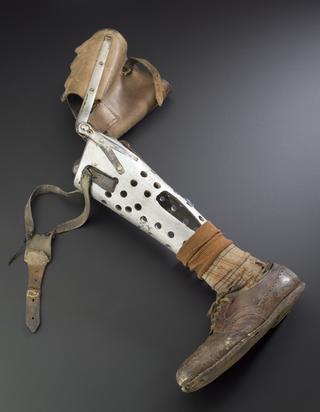








Left above knee leg made of fibre with detachable metal socket. Wooden tenon and mortice knee. Universal ankle joint by means of 4 springs. Wooden foot with toe joint. German, made circa 1915 during the First World War (Weight: 6.25 lbs 2.8 kg).
Made for a wounded German serviceman who had lost his left leg above the knee, this artificial leg is made from wood and fibreboard. The First World War saw huge numbers of amputees created across Europe. Each of the warring nations were producing artificial limbs for men wounded in this way and during the war and the years immediately afterwards many innovations in limb design were tried and tested. This leg is particularly notable for the ankle, which is jointed by four springs – these were intended to give the wearer a greater range of movement when walking.
Details
- Category:
- Orthopaedics
- Object Number:
- 1999-425
- Materials:
- wood, leather, rubber, fibreboard and iron
- Measurements:
-
overall: 180 mm x 990 mm x 280 mm, 2.46kg
- type:
- artificial leg
- credit:
- Richmond Twickenham and Roehampton Healthcare NHS Trust




